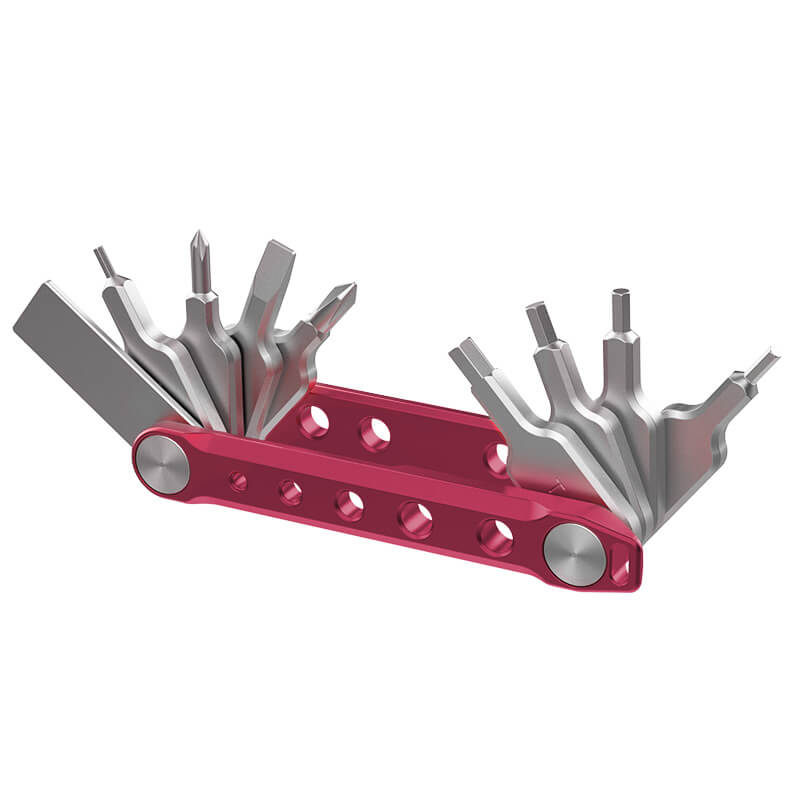Action cameras have completely changed the way we capture our adventures. These small, lightweight devices are rugged and capable of capturing high-quality photos and videos, even while on the move. Whether you're skiing in the mountains, biking across rugged terrain, or swimming underwater, action cameras can capture incredibly detailed footage. But to get the best shots, it's important to know how to securely mount your camera. This blog will share 14 effective ways to mount an action camera on your body to capture stunning footage and keep the camera secure and stable. Read on!
1. The classic helmet mount
The classic helmet mount is a popular choice for mounting an action camera, and it's easy to see why. With this method, the camera is simply attached to the top or front of your helmet using special adhesive mounts or mounts designed just for helmets. This allows you to capture all the action from a first-person perspective, which is perfect for activities like cycling, skiing, or other sports where you'll be wearing a helmet. If you use a helmet mount, make sure the camera doesn't obstruct your view or interfere with the fit of your helmet. You want to be able to see clearly while you enjoy your adventure! Make sure the mount is securely fastened, as a loose camera can slip or even fall off when you move, which could not only ruin your footage but also damage the camera.
2. The headrest

If you want to capture action camera footage hands-free, the head mount is a fantastic choice. The camera is positioned at forehead level thanks to an adjustable strap that wraps around your head. Since comfort is important, tighten the strap just enough to allow you to move freely but still keep the camera secure. It's recommended to check the fit frequently, as the strap can slip or shift during strenuous exercise.
3. The mask holder
The mask holder is ideal for snorkeling or Diving to take stunning underwater photosThe action camera attaches directly to a diving or snorkeling mask using custom-made mounts. This configuration allows you to capture everything you see beneath the water's surface. For optimal stability, we recommend using a mount compatible with your specific mask model. Keep in mind that this mount is less adaptable than others, as it's primarily designed for use during water sports. However, it's still a great option for capturing stunning ocean views!
4. The bite indicator
The bite mount is a fun way to capture unique footage while surfing or other extreme sports. Simply place the mount in your mouth and bite into place, leaving your hands free to film from an exciting angle. Before shooting, make sure the camera is secure by practicing holding it. While this mount allows for great shots, it can strain your jaw and lead to fatigue after prolonged use, making it only suitable for short shots.
5. The chest harness holder

Often referred to as “The Chesty,” the chest strap mount is designed to allow you to capture consistent shots while keeping your hands free.The camera is held at chest height by this elastic strap that wraps around your torso. While it makes filming easier, the lower angle doesn't always capture what's happening in front of you, especially when snowboarding. A backpack mount or other alternative may provide better angles, as your arms or other gear may obscure the strap.
6. The shoulder mount
The shoulder mount offers an innovative way to film. You attach the camera to the shoulder strap of your backpack or to a dedicated carrying strap. This positioning allows for unique over-the-shoulder shots that add variety to your footage. To maintain comfort, the weight must be properly balanced, especially during extended use. While this mount offers fascinating viewing angles, its range of motion is more limited than other solutions.
7. The belt holder
A belt mount is a practical accessory that allows you to attach your action camera to your hip or belt. This provides a convenient and discreet way to mount it during various activities, such as walking, running, or cycling. To use a belt mount, simply clip or slide the camera onto the mount and attach it to your belt. Some mounts come with straps to ensure that everything stays securely in place and doesn't slip.
8. The backpack holder

This useful attachment lets you attach your action camera to your backpack straps. This allows you to record videos while riding or hiking. It's easy to use: simply clip the camera onto the strap and screw it tight. Unlike a chest mount, a Backpack holder It doesn't restrict your movement with a tight strap and is easier to remove. It captures unusual angles that highlight both your surroundings and the landscape in front of you.
9. The wrist (or hand) mount
Wearing a wrist or hand mount is convenient because they are usually lightweight and adaptable. They're perfect for sports or adventures where you need to quickly access your camera without holding it in your hand. Many wrist mounts feature a 360-degree rotating platform that allows you to quickly switch to selfie mode. This is especially useful for skydivers or anyone who wants to capture dynamic shots from different angles.
10. The finger grip assembly
This attachment, which easily slips over your fingers, allows you to move the camera and capture captivating shots without the need for bulky equipment. It's very useful for activities where you want to keep your camera close at hand, such as cycling and skating. It's important to hold the camera firmly to avoid accidentally dropping it, especially while moving.
11. The magnetic holder
The magnetic mount is a clever accessory that allows you to attach your action camera to any metal surface. The powerful magnet allows you to quickly and easily attach your camera to cars, bicycles, or other metal objects. But is the magnetic mount safe for your action camera? Yes, provided you use it correctly. Simply place the camera on a suitable surface and let the magnet hold it securely—some mounts even have safety locks for added security.
12.The clip holder

The clip holder is an adaptable mount that allows you to securely attach your action camera to headgear, belts, bags, backpacks, and other surfaces. To mount the camera, simply slide the clip mount onto the surface. The robust design allows you to quickly adjust settings and capture a variety of angles—perfect for outdoor activities like horseback riding, climbing, and hiking. Just make sure the clip is secure to prevent accidental dropping.
13. The ankle support
The ankle mount attaches your action camera to your ankle, allowing for a unique filming perspective. It's ideal for activities like skateboarding, skiing, or biking where ground-level shots enhance the footage. While not as widely used as helmet or chest mounts, the ankle mount is gaining popularity among adventurous users. However, this mounting method can increase the risk of camera damage from potential impacts against the ground or obstacles. To use it, loop the adjustable straps around your ankle and fasten the camera, ensuring it is securely fastened to prevent falls and damage.
14. The cap holder
An action camera can also be attached to a hat or cap using a hat mount. This typically features a clip or bracket that secures the camera to the brim or other part of the cap. This setup is ideal for first-person shots. As a stable and convenient way to capture video without impeding movement, the hat mount is suitable for a variety of sports, such as horseback riding, skiing, and hiking.
Choose the best mount for your action camera!
Mounting your action camera correctly is important for capturing great footage and protecting both you and your camera. There are many different mounts available, so you can choose one that's suitable for your activity and the way you plan to film. Trying out different mounts can make filming even more exciting, as it allows you to get new angles and creative shots that enhance your adventures!
Read more
- The Ultimate Accessory Guide for DJI Osmo Pocket 3 Users
- What is a vlogging kit?
- portable fog machine FM01 FILMOG Ace – an innovative tool for enthusiastic photographers






